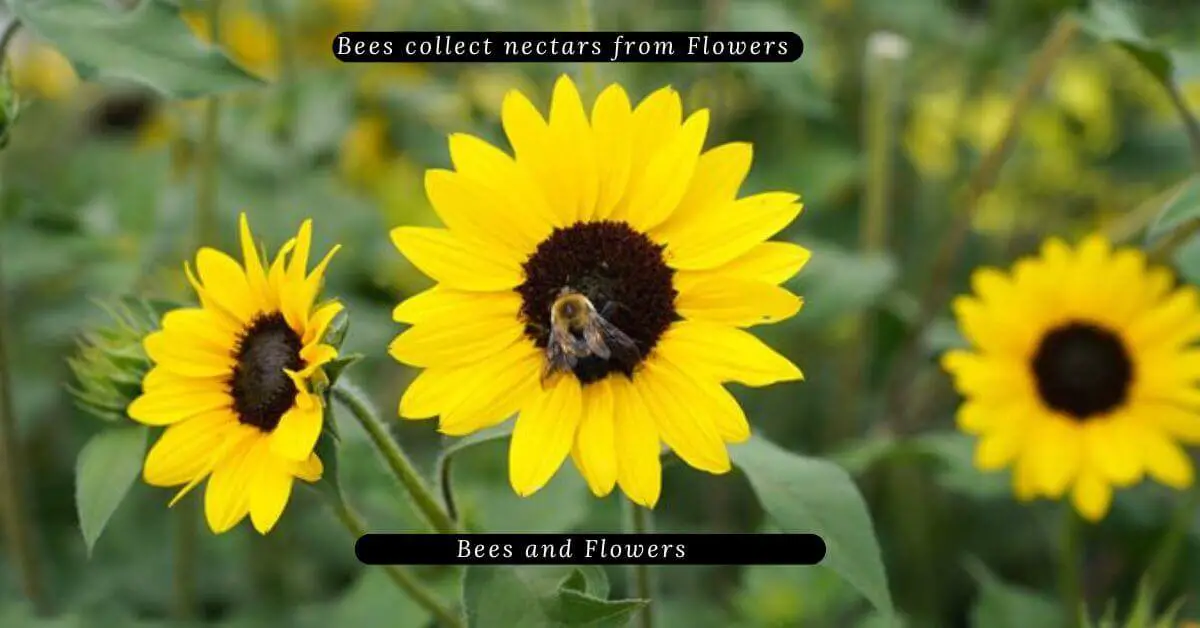Bees are fascinating creatures that play a crucial role in our ecosystem. Their ability to pollinate plants, including flowers, has a significant impact on our food supply and the environment as a whole. In this article, we will explore the relationship between bees and flowers, the benefits of this relationship, and how we can support these amazing insects.
The Benefits of Bees and Flowers
The relationship between bees and flowers has numerous benefits for both the environment and humans. For the environment, bees are essential for the pollination of plants, which helps maintain biodiversity and ecosystem stability. Without bees, many plants would not be able to produce fruit and seeds, which would have a ripple effect throughout the food chain.
For humans, the benefits of bees and flowers are even more apparent. Bees play a crucial role in the production of many crops, including fruits, vegetables, and nuts. In fact, it is estimated that bees contribute to the production of one-third of the world’s food supply. Additionally, bees produce honey, which has been used for thousands of years as a natural sweetener and medicine.
Why Flowers are important for bees
Flowers are essential for bees because they provide the nectar and pollen that bees need to survive. Bees collect nectar, a sugary liquid, as a source of carbohydrates, which provides them with the energy they need to fly and carry out their daily activities. Pollen, on the other hand, is rich in protein and other nutrients that bees need for their growth and development.

Furthermore, flowers play a crucial role in the process of pollination. Bees, as they collect nectar and pollen, also transfer pollen from the male parts of the flower to the female parts of other flowers, which fertilizes them and leads to the production of seeds and fruits. This process is not only important for the reproduction of plants but also for the maintenance of biodiversity and the production of food crops.
Related Articals
Which Flowers attract bees most?
Bees are attracted to a variety of flowers, but here are some of the most popular ones:
- Lavender
- Sunflowers
- Wildflowers
- Marigolds
- Poppies
- Black-eyed Susans
- Coneflowers
- Goldenrod
- Mint
- Rosemary
These flowers are not only great for attracting bees, but they also add beauty to your garden or outdoor space. Planting a variety of these flowers can help support bee populations and contribute to the pollination of plants in your area.
FAQ’S
Bee’s are attracted to a wide variety of flowers, but they particularly favor flowers that are rich in nectar and pollen, such as sunflowers, lavender, clover, and daisies.
Bee’s are particularly attracted to flowers that are blue, purple, or yellow, as these colors are most visible to bees and they associate them with a high nectar and pollen yield.
Yes, bee’s are attracted to white flowers, especially if they produce a high amount of nectar and pollen. Examples of white flowers that are particularly attractive to bees include jasmine, sweet alyssum, and phlox.
Yes, bees are attracted to blue flowers, particularly those with a tubular shape, as they are rich in nectar and pollen.
Yes, bumblebees, which are a type of bee, are attracted to flowers and play an important role in pollinating many plant species, particularly those with deep or complex flowers that other insects cannot reach.
Bee’s help flowers grow by transferring pollen from one flower to another, a process known as pollination. This enables plants to produce seeds, which in turn leads to the production of fruits and vegetables.
bee’s get nectar and pollen from flowers. Nectar is a sweet liquid produced by flowers, which provides bees with the energy they need to fly and produce honey. Pollen is a powdery substance produced by flowers, which is rich in protein and provides bees with the nutrients they need to grow and develop.
Summary
The relationship between bees and flowers is a vital one that has numerous benefits for both the environment and humans. However, this relationship is under threat due to a variety of factors, and it is up to us to take action to protect these important insects.




